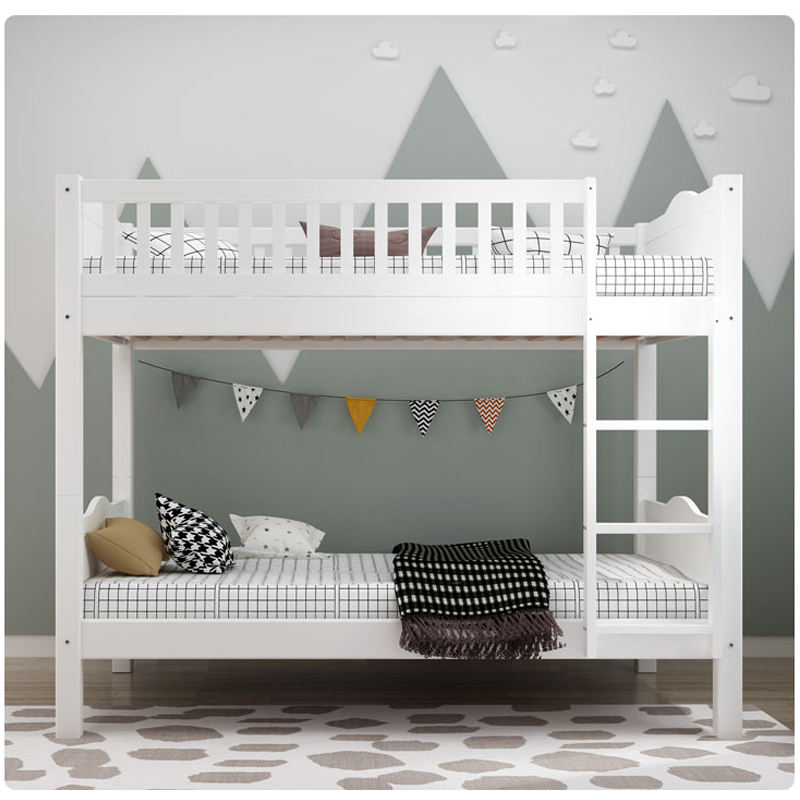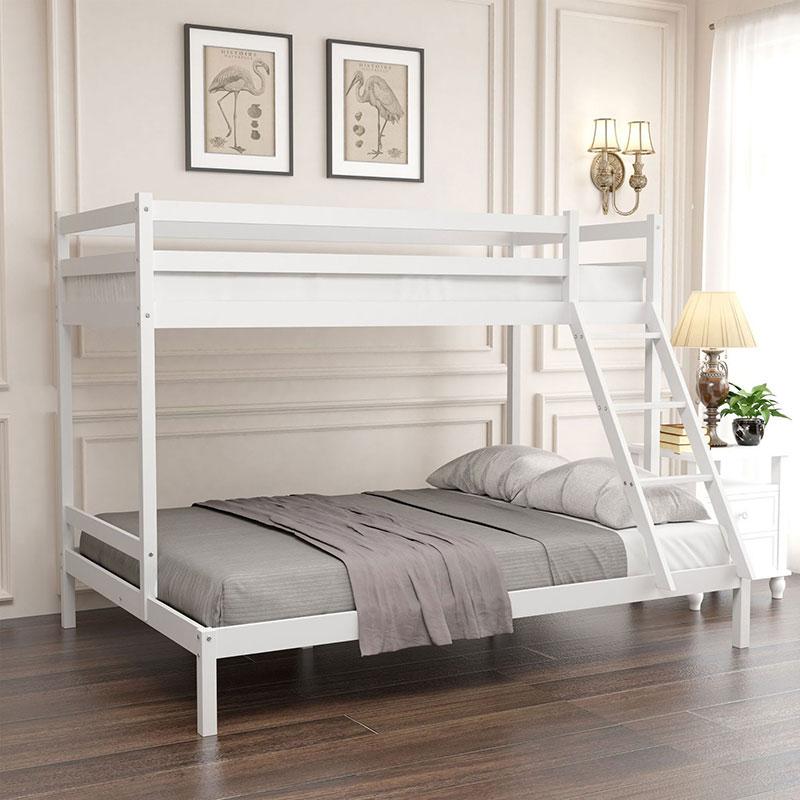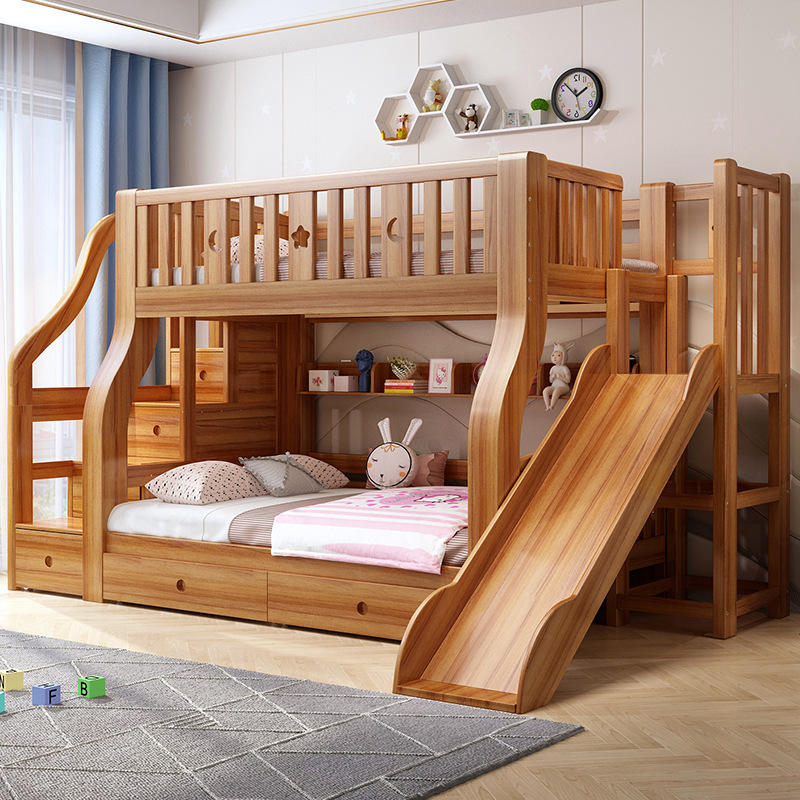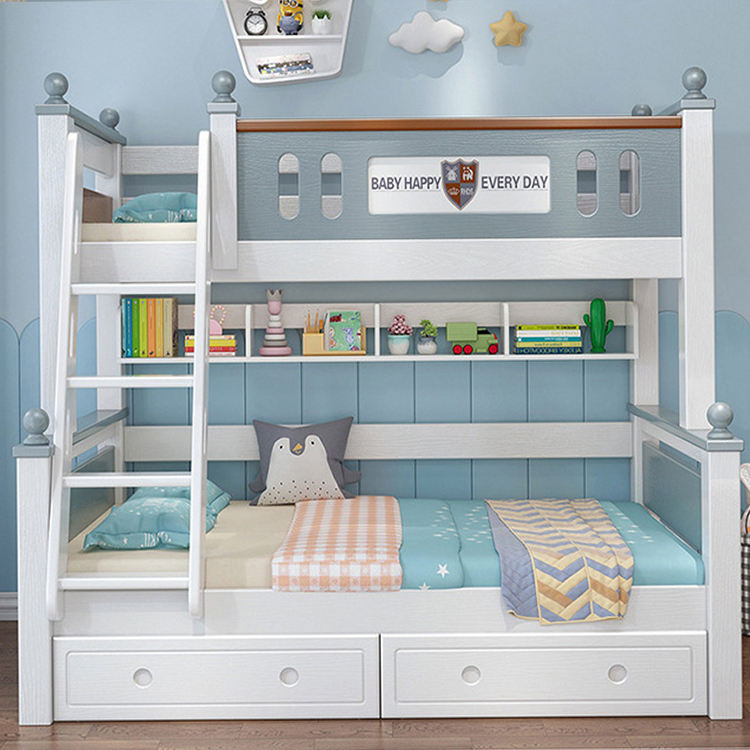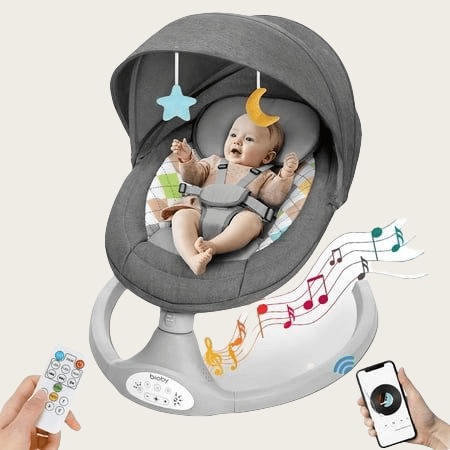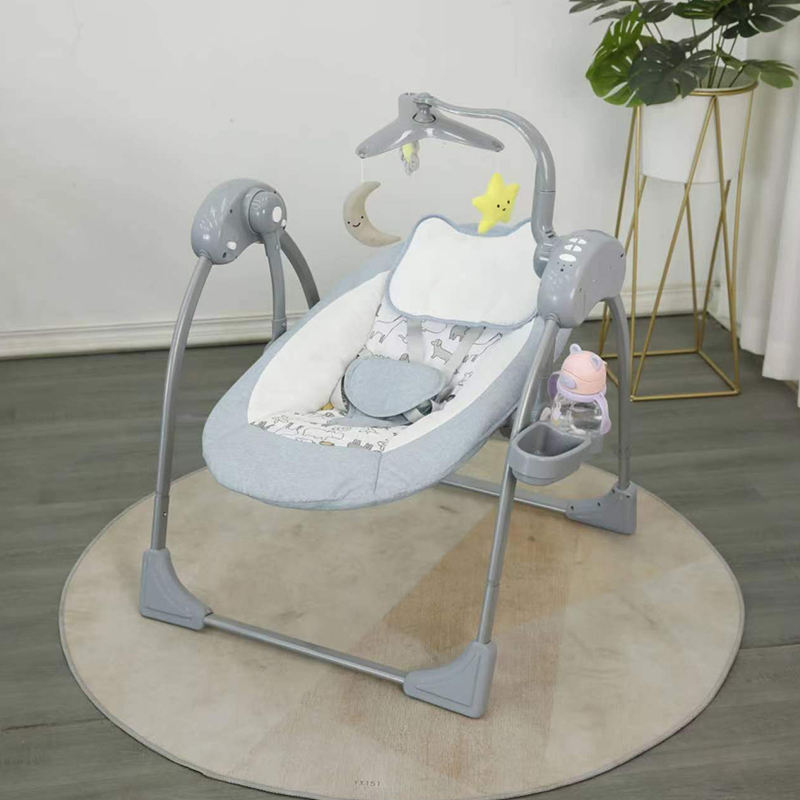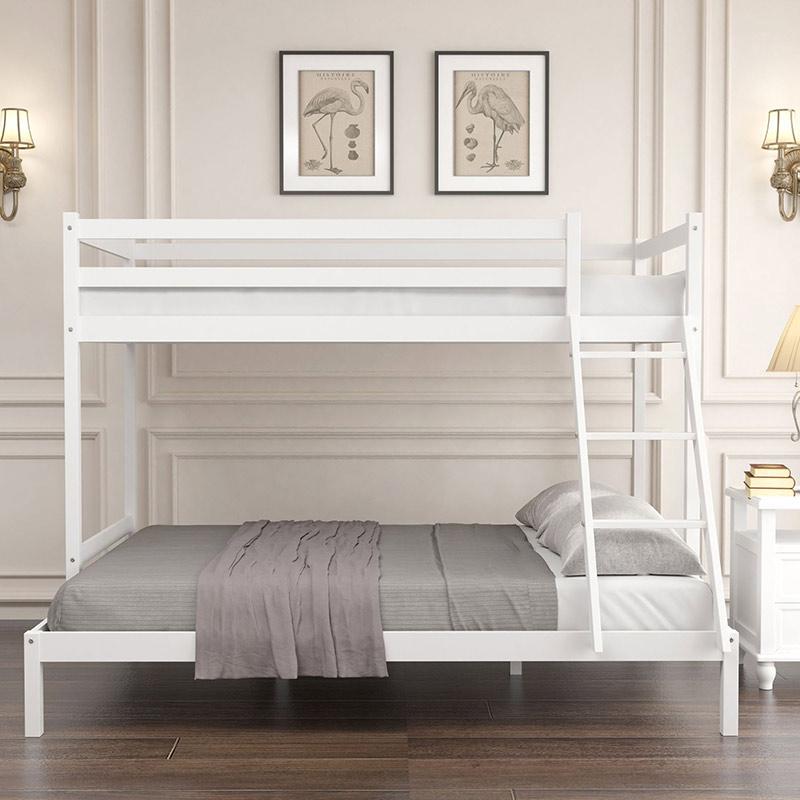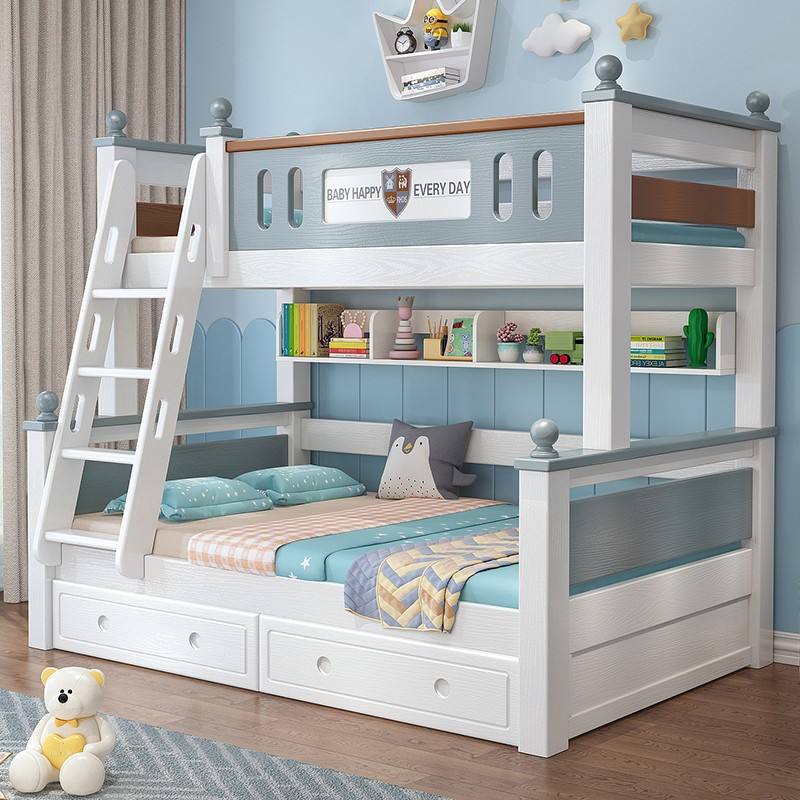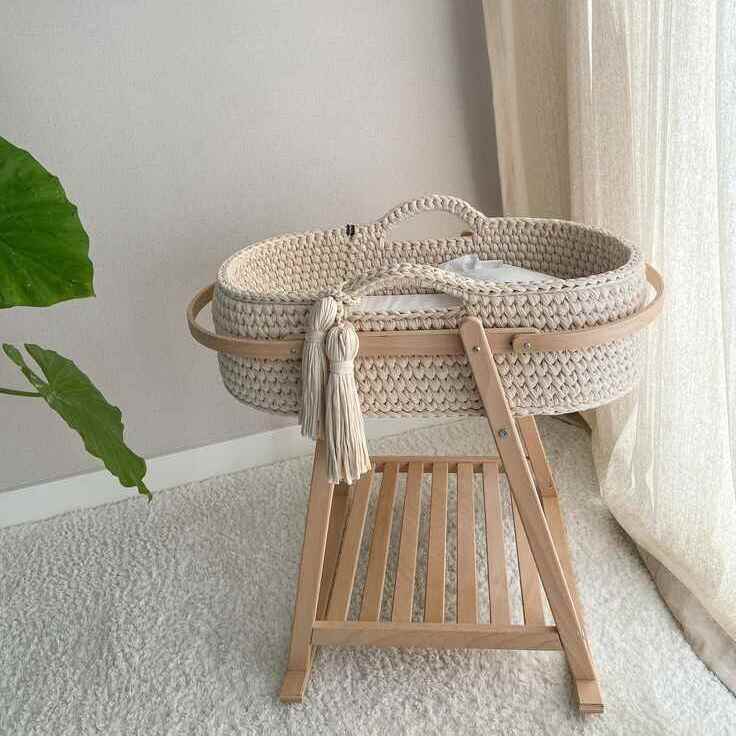Bunk beds are a great solution when you need space-efficient beds at pocket-friendly pricing. They are quite versatile too because they blend into home decor just as much as they can work for a college dorm room. Especially given the variety of designs available today.
But, are bunk beds safe?
Come along as we look into the safety concerns of different types of bunk beds and offer you tips on how to use bunk beds safely.
Are Bunk Beds Safe for Toddlers?
Yes, well-designed toddler bunk beds are safe.
However, child safety and consumer regulation bodies stipulate that only children aged 6 and above can sleep in the top bunk.
Toddlers below 6 years can sleep safely in the bottom bunk just like they would in any other toddler bed. The lower bunk is also safer because:
- It does not require the toddler to climb up or down a ladder.
- The lower bunk is near the floor which makes it easy for a younger toddler to learn how to climb on or off.
- The risk of a toddler falling off a lower bunk is very low and even when it happens the toddler is unlikely to injure themselves.
- Installing guardrails can protect toddlers from falling or rolling off a lower bunk bed.
Further, options like a Montessori bunk bed offer even more safety for toddlers. This is because the lower bunk of a Montessori bunk bed lays flat on the floor. The risk of a toddler falling is thus negligible if any. Guardrails are equally unnecessary so parents and guardians do not have to worry about toddlers rolling up against them in their sleep.
Are Bunk Beds Safe For Adults?
Yes, bunk beds are safe for adults. More so because most adults can safely manage to climb and descend from both bunks.
That said, it is essential to choose quality bunk beds that are designed and built to withstand the weight of adults. Good design here refers to both great aesthetics and proper safety provisions. The recommended safety features for adult bunk beds include guardrails and a steady ladder. (More on this below)
A quality build, on the other hand, is a bunk bed made of sturdy materials that can support the weight of adults. Fortunately, most adult bunk bed manufacturers test their designs and indicate the maximum weight that different models can take. Adhering to the indicated limits makes bunk beds safe for adults because their structures are not compromised by too much weight.
Additionally, choosing a bunk bed with adequate dimensions ensures comfortable sleep and minimizes the risk of falling off any of the bunks.
For example, twin-size bunk beds may be adequate for an adult of average weight and height. In comparison, twin over full bunk beds have a lower bunk that is bigger than the upper one; full bunks may be a better option for adults who need more space.
Are Tripple Bunk Beds Safe?
Yes, triple bunk beds are safe when designed and used correctly. However, they pose a higher risk compared to double bunk beds because of their higher height.
Some of the risks or concerns associated with triple bunk beds include:
- Falls: a triple bunk bed has a significantly high height clearance from the floor. The risk of falling off the top bunk thus poses a more severe risk because of the distance between the floor and the bunk.
- Stability: any high structure is typically harder to balance compared to a shorter one. Stability issues are thus more likely to occur in triple-bunk beds compared to single and double bunks. Good design and proper assembly can, however, eliminate this risk.
- Proximity to ceilings: the height of a triple bunk bed can sometimes get near the ceiling. This can result in head or neck injuries if there is not enough room between the top bunk and the ceiling for the person in the bed to comfortably sit up.
Still, choosing a stable well-designed triple bunk can be fairly safe and offer some benefits. Especially if you need to create multiple sleeping spaces in a room with limited space.
How Much Weight Can a Bunk Bed Hold?
A twin bunk bed for adults should be able to hold more weight compared to a twin bunk bed for kids. This is why bunk beds are differentiated based on their target users i.e. toddlers, teens, or adults.
Manufacturers further test and indicate the specific weights that their bunk beds can handle based on other factors such as the bunk bed materials. Metal bunk beds, for instance, can often handle more weight than moist wooden ones.
Nevertheless, in the same way that bunk bed sizes are fairly standardized, it is also possible to estimate their weight capacities. Here are some general weight estimates for different types of bunk beds.
A standard twin bunk bed
The weight limits often range between 150 to 200 pounds (68 to 90 kgs). However, if the bunk bed is designed for adults, this can go higher to a range of between 250 to 500 pounds (90 to 226 kgs).
Heavy-duty twin bunk beds
These are bunk beds made using high-density materials like metal or bunks designed to take on more weight. Their weight capacity is about 300 to 500 pounds (136 to 226 kgs)
Notably, lower bunk beds often have a higher weight limit than higher bunks. They are more stable and, structurally, it is safer for the bottom of the bunk bed to carry more weight than the top.
What Are the Safety Standards For Bunk Beds?
The safety standards for bunks are fairly similar. All bunk beds, for example, should have guardrails along the top bunk to prevent falls. Consumer regulatory organizations, however, differentiate safety standards for toddler and bunk adult bunk beds.
Safe bunk beds for kids should have the following safety provisions:
- Guardrails: guardrails along both sides of the top bunk are mandatory. They should measure about 5 inches higher than the mattress to protect toddlers from falling over.
- Soft edges: rounded edges minimize impact injuries that can be common if a bunk bed has sharp corners.
- Measured guardrail spaces: the spaces between guardrails should be small to prevent neck entrapment or a toddler slipping through them.
- Safe ladders: the ladder on a toddler bunk bed should be firmly secured and steady to provide access to the top bunk.
- Steady mattress foundations: the base where the mattress rests should not cave in even slightly when weight or pressure is exerted on it.
- Adequate space between bunks: there should be enough space between the top bunk and lower bunk to allow the toddler in the lower bunk to sit up without bumping their head.
Adult bunk beds, on the other hand, should feature the following safety standards:
- Quality Materials: bunk beds need to be made of durable sturdy wood or metal that can hold the weight of adults and remain intact.
- Stability: bunk beds should remain steady upon assembly and when under the pressure of weight. Parts like the mattress foundation should also not sag with pressure but stay evenly flat.
- Guardrails: bunk beds for adults require guardrails along the top bunk to prevent falls. Lower bunk guardrails are not mandatory.
- Steady ladders: ladders on adults’ bunk beds should have a strong build and adequate sizing to handle the weight of a grown-up. They should also be stable and easy to climb.
- Weight specification: an adult bunk bed manufacturer should indicate a maximum weight capacity for both bunks so that users can determine whether or not it is ideal for their needs.
- Adequate bed spacing: there should be enough room for the occupant in the lower bunk to sit up and move without bumping their head on the upper bunk.
Safety Tips For Using Bunk Beds
As a parent or guardian, you can ensure bunk beds are safer for toddlers by:
- Following manufacturer instructions: look out for and adhere to the age and weight recommendations indicated for a bunk bed. Carefully follow the assembly instructions the manufacturer provides as well.
- Choosing the right mattress: the right mattress should sit flat on the bed base. It should also not be too thick that a toddler rises above the guardrails when on top of the bed.
- Discouraging risky play: teach your toddlers to play away from their bunk beds. Falling off bunks during play is one of the leading causes of bunk bed accidents among toddlers.
- Performing regular safety and maintenance checks: check and evaluate the condition of toddler bunk beds and make repairs or replacements where necessary.
- Installing night lights: night lights in toddlers’ rooms ensure that they can safely climb in and out of their bunks even if they wake up in the middle of the night.
- Installing some backup safety measures: spreading a padded mat along toddler bunk beds and positioning bunk beds against a wall on one side can make bunking safer for toddlers.
You can also create a safer experience when using adult bunk beds by:
- Adhering to the weight limits: follow the limits set by the bunk bed manufacturer no matter how sturdy the bunk bed may look.
- Assembling bunk beds correctly: use the manufacturer’s instructions and test the beds for stability.
- Choosing the right size: the bunk bed dimensions should be adequate for an adult and be sure to confirm that there is enough space to safely maneuver between bunks.
- Performing regular maintenance checks: endeavor to disassemble the bunk bed, inspect its parts, and replace any worn bunk bed parts before reassembling it.
Conclusion
Choosing a quality bunk bed that is suitable for your needs, assembling it correctly, and performing maintenance go a long way in making bunk beds safe for both children and adults. It is equally advisable to prioritize a good adult or toddler bunk bed manufacturer too; workmanship, testing, and user instructions all significantly impact the safety of your bunk beds.
Recommended Related Articles:


